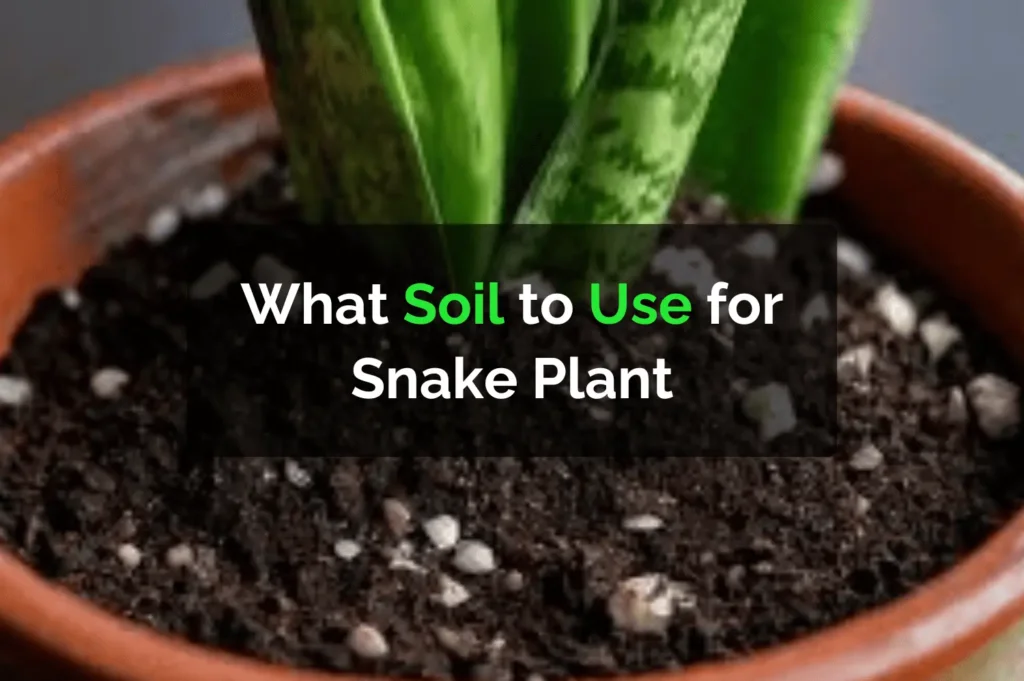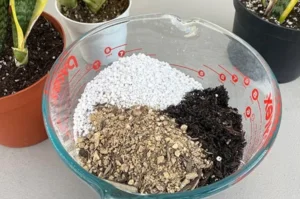Snake plants (Sansevieria, also known as Dracaena trifasciata) are popular houseplants known for their hardiness and air-purifying qualities. While they’re low-maintenance, using the right soil for snake plant is essential to support healthy growth and prevent root rot.
This article covers everything you need to know about the best soil mix for snake plants, DIY recipes, store-bought options, and expert care tips.
Why Snake Plants Need Well-Draining Soil
Snake plants are succulents, meaning they store water in their leaves. This makes them sensitive to overwatering. Soil that retains too much moisture can lead to root rot, a common issue that kills snake plants.
To avoid this, the soil must:
- Drain quickly
- Allow air to reach the roots
- Dry out between watering
Characteristics of the Best Soil for Snake Plants
Here are the top features of ideal snake plant soil:
- Fast drainage: Prevents excess moisture buildup.
- Light texture: Keeps the roots from suffocating.
- Low organic matter: Too much compost can hold water.
- Neutral to slightly acidic pH: Between 5.5 and 7.0 is perfect.
DIY Snake Plant Soil Mix Recipe
You can make your own homemade soil mix using simple ingredients:
- 2 parts cactus/succulent mix
- 1 part coarse sand
- 1 part perlite or pumice
This DIY blend helps create a balance between water retention and drainage, making it a perfect soil for snake plants.
Can You Use Regular Potting Soil for Snake Plants?
Regular potting soil is not ideal on its own. It tends to hold too much moisture, which increases the risk of root rot. However, you can improve it by adding:
- 1 part perlite
- 1 part coarse sand or orchid bark
This creates better airflow and drainage, making the mix more suitable for snake plants.
Top Pre-Mixed Soils for Snake Plants
If you prefer store-bought soil, look for products labeled for succulents or cacti. Here are some reliable options:
- Miracle-Gro Cactus, Palm & Citrus Mix
- Espoma Organic Cactus Mix
- Bonsai Jack Succulent Soil Gritty Mix
Always check that the mix contains materials like sand, pumice, or perlite.
How to Improve Poor Soil for Snake Plants
If your plant is already in compact or moist soil, you don’t always need to throw it away. Here’s how to improve it:
- Mix in perlite or pumice to boost drainage
- Add coarse sand to lighten the texture
- Remove any peat-heavy material, which holds too much water
These simple adjustments can help your snake plant thrive without needing to completely repot it.
Signs Your Snake Plant Soil Isn’t Working
Your plant will give you clues when the soil isn’t right. Watch for these signs:
- Soft or mushy leaves
- Yellowing or browning tips
- Soil remains wet for days
- Mold or fungus on the soil surface
- Foul smell from the pot
These symptoms usually point to poor drainage or excess moisture.
How Often Should You Change the Soil?
To maintain healthy growth, repot your snake plant every 1–2 years. Over time, soil becomes compact and loses its structure. Repotting gives the roots room to grow and ensures proper airflow and drainage.
Best Pot Type for Snake Plant Soil
Using the right pot is just as important as using the right soil. For snake plants, choose:
- Terra cotta or clay pots: They absorb excess moisture.
- Pots with drainage holes: Essential to allow water to escape.
- Avoid plastic pots unless you monitor moisture closely.
How to Repot a Snake Plant Step-by-Step
- Gently remove the plant from its current pot.
- Shake off old soil and check roots for damage or rot.
- Trim any unhealthy roots with sterile scissors.
- Fill the new pot with your well-draining soil mix.
- Place the plant in the center and backfill around it.
- Water lightly and let dry out before the next watering.
Conclusion
The secret to a healthy, long-lasting snake plant is using the right soil mix. Whether you choose a commercial succulent blend or make your own, the goal is the same: fast drainage, proper aeration, and moisture control.






